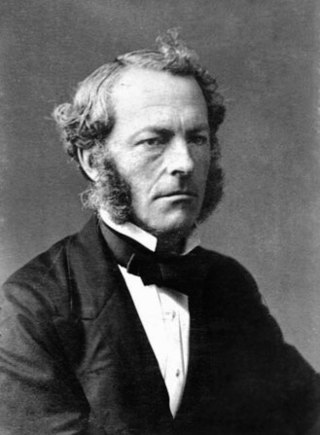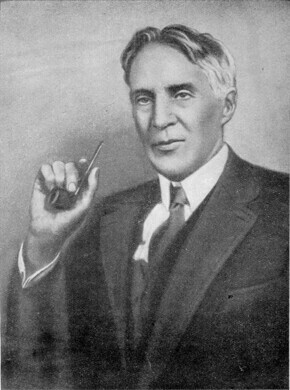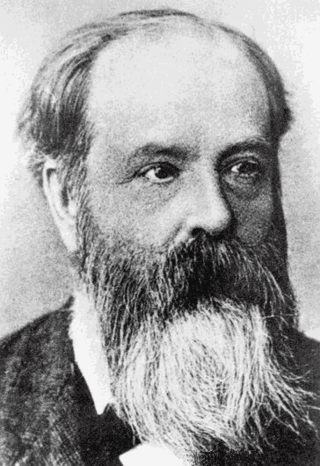
Ḥasan Ibn al-Haytham, Latinized as Alhazen, was a medieval mathematician, astronomer, and physicist of the Islamic Golden Age from present-day Iraq. Referred to as "the father of modern optics", he made significant contributions to the principles of optics and visual perception in particular. His most influential work is titled Kitāb al-Manāẓir, written during 1011–1021, which survived in a Latin edition.

Optics is the branch of physics that studies the behaviour and properties of light, including its interactions with matter and the construction of instruments that use or detect it. Optics usually describes the behaviour of visible, ultraviolet, and infrared light. Because light is an electromagnetic wave, other forms of electromagnetic radiation such as X-rays, microwaves, and radio waves exhibit similar properties.
Optica is a professional society of individuals and companies with an interest in optics and photonics. It publishes journals and organizes conferences and exhibitions. It currently has about 488,000 customers in 183 countries, including nearly 300 companies.

Sir George Gabriel Stokes, 1st Baronet, was an Irish English physicist and mathematician. Born in County Sligo, Ireland, Stokes spent all of his career at the University of Cambridge, where he was the Lucasian Professor of Mathematics from 1849 until his death in 1903. As a physicist, Stokes made seminal contributions to fluid mechanics, including the Navier–Stokes equations; and to physical optics, with notable works on polarization and fluorescence. As a mathematician, he popularised "Stokes' theorem" in vector calculus and contributed to the theory of asymptotic expansions. Stokes, along with Felix Hoppe-Seyler, first demonstrated the oxygen transport function of hemoglobin and showed color changes produced by aeration of hemoglobin solutions.

Adaptive optics (AO) is a technology used to improve the performance of optical systems by reducing the effect of incoming wavefront distortions by deforming a mirror in order to compensate for the distortion. It is used in astronomical telescopes and laser communication systems to remove the effects of atmospheric distortion, in microscopy, optical fabrication and in retinal imaging systems to reduce optical aberrations. Adaptive optics works by measuring the distortions in a wavefront and compensating for them with a device that corrects those errors such as a deformable mirror or a liquid crystal array.

Robert Williams Wood was an American physicist and inventor who made pivotal contributions to the field of optics. He pioneered infrared and ultraviolet photography. Wood's patents and theoretical work inform modern understanding of the physics of ultraviolet light, and made possible myriad uses of UV fluorescence which became popular after World War I. He published many articles on spectroscopy, phosphorescence, diffraction, and ultraviolet light.

In physics, physical optics, or wave optics, is the branch of optics that studies interference, diffraction, polarization, and other phenomena for which the ray approximation of geometric optics is not valid. This usage tends not to include effects such as quantum noise in optical communication, which is studied in the sub-branch of coherence theory.

Roy Jay Glauber was an American theoretical physicist. He was the Mallinckrodt Professor of Physics at Harvard University and Adjunct Professor of Optical Sciences at the University of Arizona. Born in New York City, he was awarded one half of the 2005 Nobel Prize in Physics "for his contribution to the quantum theory of optical coherence", with the other half shared by John L. Hall and Theodor W. Hänsch. In this work, published in 1963, he created a model for photodetection and explained the fundamental characteristics of different types of light, such as laser light and light from light bulbs. His theories are widely used in the field of quantum optics. In statistical physics he pioneered the study of the dynamics of first-order phase transitions, since he first defined and investigated the stochastic dynamics of an Ising model in a largely influential paper published in 1963. He served on the National Advisory Board of the Center for Arms Control and Non-Proliferation, the research arms of Council for a Livable World.
Leonard Mandel was an American physicist who contributed to the development of theoretical and experimental modern optics and is widely considered one of the founding fathers of the field of quantum optics. With Emil Wolf he published the highly regarded book Optical Coherence and Quantum Optics.

The Physical Society of London, England, was a scientific society which was founded in 1874. In 1921, it was renamed the Physical Society, and in 1960 it merged with the Institute of Physics (IOP), the combined organisation eventually adopting the name of the latter society.
The European Optical Society (EOS), founded in 1991, is a European organisation for the development of the science of optics. Membership is open to national optical societies, individuals, companies, organisations, educational institutions, and learned and professional societies. EOS runs international conferences; lobbies for optical science at European level; offers a focus for collecting and disseminating knowledge in the field, and publishes the online journal JEOS:RP.

Jonathan P. Dowling was an Irish-American researcher and professor in theoretical physics, known for his work on quantum technology, particularly for exploiting quantum entanglement for applications to quantum metrology, quantum sensing, and quantum imaging.
Physical Review A is a monthly peer-reviewed scientific journal published by the American Physical Society covering atomic, molecular, and optical physics and quantum information. As of 2021 the editor was Jan M. Rost.

Orbital angular momentum (OAM) multiplexing is a physical layer method for multiplexing signals carried on electromagnetic waves using the orbital angular momentum of the electromagnetic waves to distinguish between the different orthogonal signals.

Miles John Padgett is A Royal Society Research Professor of Optics in the School of Physics and Astronomy at the University of Glasgow. He has held the Kelvin Chair of Natural Philosophy since 2011 and served as Vice Principal for research at Glasgow from 2014 to 2020.
David G. Grier is an American physicist whose research focuses on experimental soft condensed matter physics—an interdisciplinary field that includes physics, chemistry, biology, and nanotechnology, aiming to understand how objects interacting in simple ways manage to organize into sophisticated hierarchies of structure and function.
Hilda Conrady Kingslake was an English-American researcher in the field of optics.

Nikolay Zheludev is a British scientist specializing in nanophotonics, metamaterials, nanotechnology, electrodynamics, and nonlinear optics. Nikolay Zheludev is one of the founding members of the closely interlinked fields of metamaterials and nanophotonics that emerged at the dawn of the 21st century on the crossroads of optics and nanotechnology. Nikolay’s work focus on developing new concepts in which nanoscale structuring of matter enhance and radically change its optical properties.

Patrick Gill, is a Senior NPL Fellow in Time & Frequency at the National Physical Laboratory (NPL) in the UK.
Alexander Luis Gaeta is an American physicist and the David M. Rickey Professor of Applied Physics at Columbia University. He is known for his work on quantum and nonlinear photonics. He is a Fellow of the American Physical Society, Optica, and of the Institute of Electrical and Electronics Engineers.












